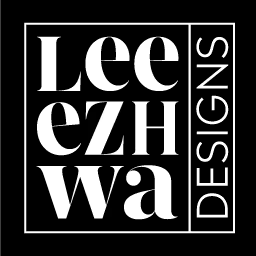The Constant Negotiation
Every creative knows this moment: you present work you know is strong, but the client frowns. They want more logos, fewer risks, something “safer.”
You nod politely. They sign the check. You adjust.
But inside, you feel a sting. Because you know you just traded your gut for approval.
This tension, between designing for others and designing from the gut, is the central paradox of creative work. Clients hire you for your vision, but often push you toward what they already know. And if you give in too often, you start losing the very gut instinct that made you valuable in the first place.
The Problem: Pleasers vs. Leaders
The creative industry breeds pleasers.
- Agencies train designers to say “yes” to keep clients happy.
- Freelancers often compromise to avoid losing contracts.
- Corporate environments reward “alignment” more than originality.
The data backs this up:
- A 2020 Adobe survey found that 58% of creative professionals feel pressured to compromise their vision to satisfy clients.
- Yet, the same study showed that campaigns rated as “brave” or “gut-driven” perform 30% better in recall and brand lift.
So why do we keep folding? Because conflict feels dangerous. And for ADHD creatives like me, rejection sensitivity dysphoria makes every “we don’t like it” feel like an earthquake.
But here’s the truth: great design doesn’t come from pleasing. It comes from leading.
Personal Anecdote: ToddStreet × Intercept
I learned this lesson during a two-year collaboration with ToddStreet on Intercept (Alfasigma Group).
The brief: sales training. The reality: stale decks, uninspired visuals, content so dense that reps tuned out halfway through.
The client initially wanted “updates.” Cleaner slides. A bit more polish.
But my gut told me polish wasn’t enough. What they needed was transformation. The decks weren’t just information carriers, they were morale killers. My instinct said: This isn’t about slides. It’s about impact.
So instead of just making it “prettier,” I pushed for a narrative redesign. I reframed the decks as stories, not manuals. I integrated interactivity, pacing, and moments of surprise. Slowly, we rebuilt their training approach around storytelling principles.
The results? Engagement went up. Reps actually remembered the content. The sales force didn’t just get trained, they got inspired.
That project taught me that designing from the gut doesn’t mean ignoring clients. It means leading them where they don’t yet realize they need to go.
Framework: The Gut Compass
Here’s the framework I use now:
Listen First. Clients need to feel heard. Every request is Data: not always direction.
Find the Gap. Identify the space between what they want and what they need.
Design Two Versions. One that reflects their expectations, one that reflects your gut. Then explain the difference.
Lead With Story. Show how your gut-driven version solves their real problem better.
Negotiate, Don’t Capitulate. Collaboration means guiding, not surrendering.
Pia Silva’s Badass Your Brand says it bluntly: stop being a hired hand. Be the authority. Clients hire you for your perspective, so give it to them unapologetically.
Data: Why Gut Wins
The science backs it:
- Research in Harvard Business Review shows that clients who are challenged (not just appeased) report higher satisfaction long-term.
- A Nielsen study found that campaigns that “broke category norms” had 68% higher effectiveness scores.
- Neuroscience research shows that novelty activates the hippocampus, increasing memory retention. Safe design isn’t just boring, it’s forgettable.
Gut instincts aren’t mystical. They’re accumulated expertise, subconscious pattern recognition honed over years. Ignoring them is ignoring the very thing clients are paying for.
The Shift: From Pleaser to Leader
The Intercept project was a turning point. Instead of just delivering what they asked for, I delivered what I knew would work. And instead of resisting, the client embraced it, because I showed them the results.
That’s when I realized: the client isn’t the enemy. Fear is. Fear of rejection. Fear of losing the contract. Fear of being “too much.”
Once you stop designing from fear and start designing from the gut, you stop being a pleaser. You start being a leader.
Actionable Takeaways
If you struggle with this tension, here’s how to bridge it:
Build Trust Early.
Clients accept gut-led work when they trust your expertise.
Translate Gut Into Data.
Pair your instincts with research or case studies. It reassures hesitant clients.
Show Two Futures.
Present the safe route and the bold route. Let them see the difference.
Document Impact.
Track engagement, recall, or sales lift from gut-led projects. Proof beats persuasion.
Know When to Walk.
If a client consistently demands costume work, ask if that’s really your story.
Conclusion: Gentle Guidance, Firm Gut
Designing for others will always be part of the job. But designing only for others will kill your creativity.
The art is in the balance: listening deeply, guiding gently, but never abandoning your gut. Because your gut is your compass. It’s the source of originality, the thing that makes your work undeniable.
And if you lead with it, respectfully, strategically, unapologetically, you don’t just satisfy clients. You transform them.
Still Hungry?
Don’t stop here. If this post lit a spark, you’ll want to dive into more ideas cut from the same cloth, sharper thinking, bolder design, and zero fluff.
The Day I Fired My “Inner Impostor Boss”
How ADHD magnifies impostor syndrome and what it takes to shut it down.
From Corporate Costume to Thin Creative Skin
Why hiding behind conformity kills originality and how authenticity is your new armor.
Permission Slips for Reinvention - Why no one else is going to hand you one.
Stop waiting for diplomas, managers, or permission... write your own slip.


